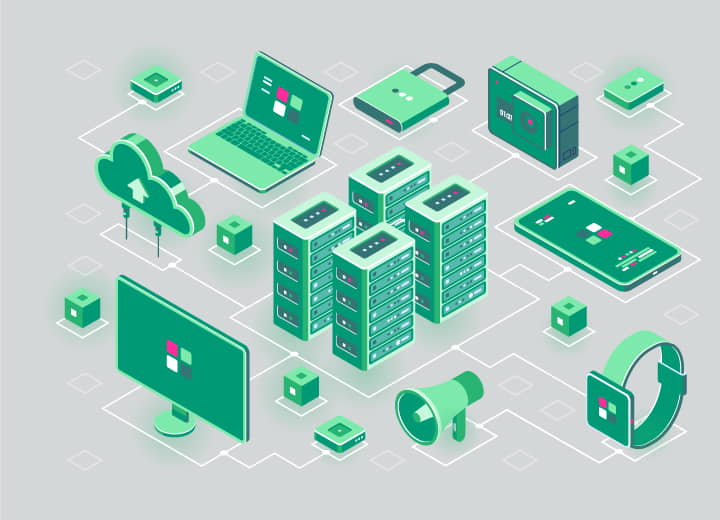Web development has mushroomed with the growing popularity & demand for e-commerce businesses and accessibility of information in the fast-paced digital era.
If you are contemplating taking up web development as a career choice and want to know the basics, then you have arrived at the right place. Yes, with the right knowledge and guidance you can build your own website or do it for others, and you may even end up creating something wonderful. But for anyone to venture into a new field of learning/specialization, one must first understand the cornerstones of the philosophy behind it.
To put it simply, just like cars/vehicles come in all different shapes and sizes but they are all equipped with the basics like wheels, transmission engine, brakes, tires, frame, steering system, etc. to function, we can say that websites too are built the same way.
It is not a complicated process and a budding web developer has to understand the core elements that go into making and running a functional website to proceed in the right direction. This blog will discuss the 3 fundamental components that form the base for website development in sufficient detail, serving as a guide for beginners who want to master the process.
Firstly, let’s understand what exactly is website development. According to Wikipedia, “Web development is the work involved in developing a website for the Internet (World Wide Web) or an intranet (a private network)”. Basically, web development is a catch-all term for the work that goes into building a website. This includes everything from coding to the design features of the website to make it look trendy & contemporary.
The 3 core Fundamental components of Web development
For preparing tea one needs to have water and tea leaves/bags which are absolute must-haves, and then you add sugar, milk, etc. to taste, similarly, website development too has 3 main or must-have components, without which it is not possible to build a functional website, but there are many other components which can make a website more robust.
Domain

A web domain is the Uniform Resource Locator (URL) or address of a webpage that replaces the Internet Protocol (IP) address. Simply put, when looking up a website using a browser, the domain is what comes as the ‘www’ in the search field of the browser. We can replace the IP address for example 27.147.160.223 with a domain name such as www.dcastalia.com.
Classification of domain
A domain name can be classified into three parts i.e. third-level, second-level, and top-level domain. By taking a closer look at our domain www.dcastalia.com, the ‘www’ will be the third-level domain, the portion, ‘dcastalia,’ will be the second-level domain name, and the ‘.com’ portion will be the top-level domain or TLD. The domain name breakdown is illustrated in the diagram below:
The primary purpose of a domain name is to help visitors locate the website with minimal effort. It is possible to accomplish that easily if the three parts of the domain name are built accordingly. The third-level domain is the standard part of the domain name but the second-level domain name is the unique part of the domain name that informs the browser to look for the domain name on the web. This part of the domain name should be easily located and closely related to the purpose of the website. In most cases, the name of the website is used as the second-level name.
Web Hosting

Web hosting is a type of Internet hosting service that hosts websites for clients. That is when a hosting provider allocates space on its own server for a website to store its data, they are hosting a website. Service platforms providing web hosting services are called web hosts or hosting providers.
What is a server?
A server is a computer that connects web users or visitors to the website from across the world. Every website on the internet is hosted on a server.
As the name implies, web hosting service providers have their own servers, connectivity, and associated services to host websites. Depending on the purpose of the website, the type of server is to be selected.
Types of web servers
There are various types of web servers available, but the most popular of them includes Shared-Server, Virtual Private Server, Dedicated Server, and Cloud Server. It is detrimental to have knowledge about different types of server and their functionalities to select the right one that caters to all the needs of the website the most. A brief description of the functionalities of the different servers available by most of the popular web hosting services is given below:
Shared-Server: This is the option for web developers who are just getting started on the web and are not expecting a massive influx of traffic visitors to their websites.
Virtual Private Server: This is for developers who are working to host more people on a website. A virtual private server grants a little bit more space and control over the server.
Dedicated Server: This is for web developers working in teams on projects that have a high level of traffic. Dedicated servers normally host a website that has teams looking to maintain and update the website on a regular basis.
Cloud Server: This fairly new type of web server grants the right amount of features for scalability in terms of development and maintenance. It is completely unrequired to switch between packages in case of increasing traffic. And, thus the developer has the freedom to increase the quality of the server to cater to that growing demand anytime.
Content Management System (CMS)

What is a Content Management System or CMS?
A Content Management System, in short CMS, is a software application that allows developers to build and manage a website without writing codes. In simpler terms, CMS is the interface between the developer and the code that makes up the website. It is maybe the solution for beginners to make a website even with limited technical knowledge and resources or not knowing how to code at all– thus, WordPress development is becoming trendy and popular amongst many.
If not for building a website, using a CMS makes things a lot easier in general. It provides the basic building blocks like predesigned templates, content scheduling, SEO fixtures, and extensions, etc. Additionally, CMS usually has the option of letting the developer create the structure using code as well.
Classification of CMS
In terms of functionality, there are mainly two main types of CMS: a Self-Hosted CMS or a Cloud CMS.
Self-Hosted CMS: Self-Hosted CMS is required to be built on its own server, for better control, which is later uploaded onto the web server and is visible on the internet under their web addresses. Examples of such CMS include WordPress.org, Joomla, Magento, etc. Furthermore, WordPress-based website maintenance is essential in order to maintain the website running smoothly and without problems. Moreover, developing a WordPress website takes a lot less development time than using other technologies.
Cloud CMS: Cloud CMS server is hosted and managed by the company that runs the system. Thus there is no need to upload to an external web server. Examples of such CMS include WordPress.com, Wix, Squarespace, Shopify, etc. This is the better option for beginners as a Cloud CMS does not require learning how to code or even manage a web server.
Summary
Web development is the process of creating a website, which can be accomplished by checking off the three fundamental components listed in this blog.
In the 21st century, where business models are gearing towards e-commerce, having a website has become a fundamental requirement for many. The increasing demand and popularity for web development is surely going to witness an upsurge in the number of aspiring developers entering the market in the coming years.
Web development holds brilliant prospects, because of the consistent need generated by an ever-growing expansive base of internet users and businesses. Everyone wants to develop a website that looks stunning and has the ultimate user-friendly features. Therefore, it is surely worthwhile for aspiring developers to invest time in understanding and learning the core components of web development as a stepping stone to building a career in this field of technology.


